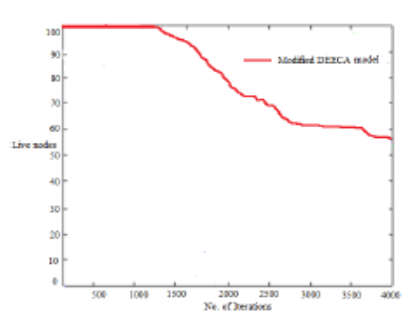


Indian Journal of Science and Technology
Year: 2023, Volume: 16, Issue: 30, Pages: 2333-2340
Original Article
Veena I Puranikmath1*, Sridhar Iyer2, Sunil S Harakannanavar3
1Department of Electronics and Communication Engineering, S.G. Balekundri Institute of Technology, Belagavi, 560064, Karnataka, India
2Department of CSE(AI), KLE Technological University, Dr. MSSCET, Belagavi, 590008, Karnataka, India
3Department of Electronics and Communication Engineering, Nitte Meenakshi Institute of Technology, Yelahanka, Bangalore, Karnataka, India
*Corresponding Author
Email: [email protected]
Received Date:22 February 2023, Accepted Date:07 July 2023, Published Date:09 August 2023
Objective: To reduce energy consumption and robust algorithm for Wireless Sensor Networks (WSNs). To achieve energy-efficiency, the proposed algorithm incorporates data aggregation models. Data aggregation involves combining and summarizing data from multiple sensor nodes before transmitting it to the Base Station (BS) which helps reduce the overall energy consumption of the network. Methods: A modified version of the Distributed Energy Efficient Clustering Algorithm (MDEECA) is proposed The MDEECA algorithm introduces several parameters which include scaling factor, selection of Cluster Head (CH), threshold probability, and information related to the neighborhood for the next CH selection. Findings: The proposed model is evaluated in terms of packet transmissions. In the first 1000 iterations, 9564 packets are sent to the BS, and this number increases to 29394 packets after 4000 iterations. In the case of packets sent to the CHs, 14456 packets are sent in the first 1000 iterations, and this increases to 112464 packets after 4000 iterations. These results demonstrate the effectiveness of the proposed MDEECA algorithm in terms of data transmission efficiency. Novelty: The modified MDEECA algorithm’s novelty lies in its approach, CH selection based on the residual energy of nodes and the average energy of the network. This modification enhances robustness of the algorithm and improves energy performance, leading to an extended network lifetime. The modified MDEECA algorithm also increases the network lifetime and enhances energy performance in comparison to existing models.
Keywords: Network Protocols; Wireless Network; Sensor node
© 2023 Puranikmath et al. This is an open-access article distributed under the terms of the Creative Commons Attribution License, which permits unrestricted use, distribution, and reproduction in any medium, provided the original author and source are credited. Published By Indian Society for Education and Environment (iSee)
Subscribe now for latest articles and news.